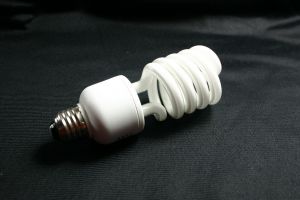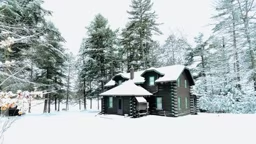 1. Large overhangs keep the summer sun from pouring in through the windows and protect your logs from the elements.
1. Large overhangs keep the summer sun from pouring in through the windows and protect your logs from the elements. 2. Quality windows and doors Price makes a difference when it comes to materials and well-engineered frames. Poor windows can be huge energy wasters. Find windows with low-E glass.
3. Passive solar heat allows the low winter sun to warm your home through southern windows. The key is designing a passive solar home to best take advantage of your climate.
4. Foundation design Insulated concrete forms are more energy efficient than plain concrete walls with interior Sheetrock. Un-insulated basements can waste 30% of your energy dollars, says Superior Walls of America.
5. Envelope air tightness Insulation errors and poor air sealing can account for up to 50% excess energy consumption, according to the Log Homes Council.
6. Ventilation for the great room Keep sunlit rooms well ventilated to prevent overheating and create even temperatures. Operable windows and ceiling fans can help.
7. Proper HVAC Oversized furnaces cycle on and off more often than correctly sized furnaces, which will run at steady rate, says the U.S. Department of Energy.
8. Consider window coverings Cellular and fabric shades provide added insulation, especially at night, according to Hunter Douglas.
9. Add fireplace doors and a heater insert The use of glass doors and fireplace blower mechanisms optimize the heat generated by a fire, says Vermont Castings.
10. Inspect regularly Some shrinkage in your home’s walls can occur over time (even in stick-built homes) and create gaps around windows, doors, and fixtures. Caulk will help solve the problem. 11. Insulate the ceiling Opt for an insulated ceiling rather than open rafters, or consider SIPs (Structural Insulated Panels) in the roof system.
12. Try a tankless water heater On-demand, tankless water heaters keep energy costs down by not having to heat 40 gallons of water day and night.
13. Use fluorescent light bulbs They use up to 50-75% less energy and last up to 10 times longer, say experts at GE Lighting.
14. Go with Energy Star Many appliances, furnaces, windows, lighting, home sealants, and roofing products are rated by the EPA’s Energy Star program for energy efficiency.
15. Thermostat control Creating several heating/cooling zones and using programmable thermostats in the home not only saves energy, but also keeps you more comfortable, say Honeywell’s Environmental and Combustion Control (ECC) experts. Some of these items may cost more initially, but the dollar savings should be returned within a few years.




_11868_2024-09-17_08-44-256x288.avif)






